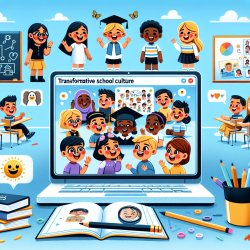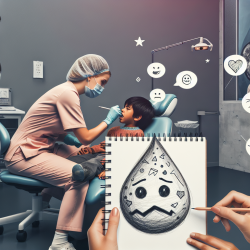Introduction
As practitioners in the field of speech-language pathology, we often encounter diverse cultural backgrounds in our clients. Understanding and respecting these differences is crucial for providing effective therapy. A recent study titled A co-designed curriculum for cultural safety training of Colombian health professionals: sequential-consensual qualitative study offers valuable insights into how we can enhance our practice through cultural safety training. This blog will explore the study's findings and discuss how they can be applied to improve outcomes for children receiving online therapy services through platforms like TinyEYE.
Understanding Cultural Safety
Cultural safety involves recognizing and respecting the cultural identities of clients and understanding how these identities influence their healthcare experiences. The study conducted in Colombia identified five key learning objectives for cultural safety training:
- Culturally Unsafe Practices: Acknowledge intercultural tensions and their consequences.
- Cultural Awareness: Examine personal attitudes, beliefs, and values.
- Cultural Humility: Learn from clients' traditional practices.
- Cultural Competence: Describe pedagogical approaches to address intercultural tensions.
- Cultural Safety: Engage in discussions with clients to reach treatment agreements.
Applying Cultural Safety in Speech-Language Pathology
Incorporating cultural safety into speech-language pathology can significantly enhance therapeutic outcomes. Here’s how practitioners can implement these principles:
- Self-Reflection: Regularly reflect on your cultural biases and how they may affect your interactions with clients. This can be achieved through journaling or peer discussions.
- Client Engagement: Actively involve clients and their families in the therapy process. Encourage them to share their cultural practices and beliefs that may impact therapy.
- Educational Adaptation: Tailor educational materials and therapy techniques to align with the cultural backgrounds of your clients. This may involve using culturally relevant examples or materials.
- Continuous Learning: Stay informed about cultural safety practices and seek out training opportunities. This could include workshops, online courses, or reading relevant literature.
Encouraging Further Research
While the study provides a solid foundation, further research is needed to explore cultural safety's specific impact on speech-language pathology. Practitioners are encouraged to engage in research initiatives or collaborate with academic institutions to expand the knowledge base in this area.
Conclusion
By integrating cultural safety into our practice, we can create a more inclusive and effective therapeutic environment for children. This approach not only respects the cultural identities of our clients but also enhances their engagement and outcomes. For those interested in delving deeper into the research, I highly recommend reading the original study. To read the original research paper, please follow this link: A co-designed curriculum for cultural safety training of Colombian health professionals: sequential-consensual qualitative study.










